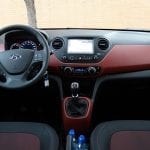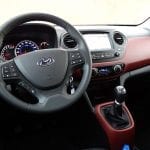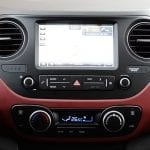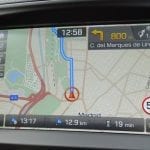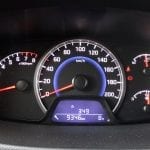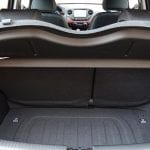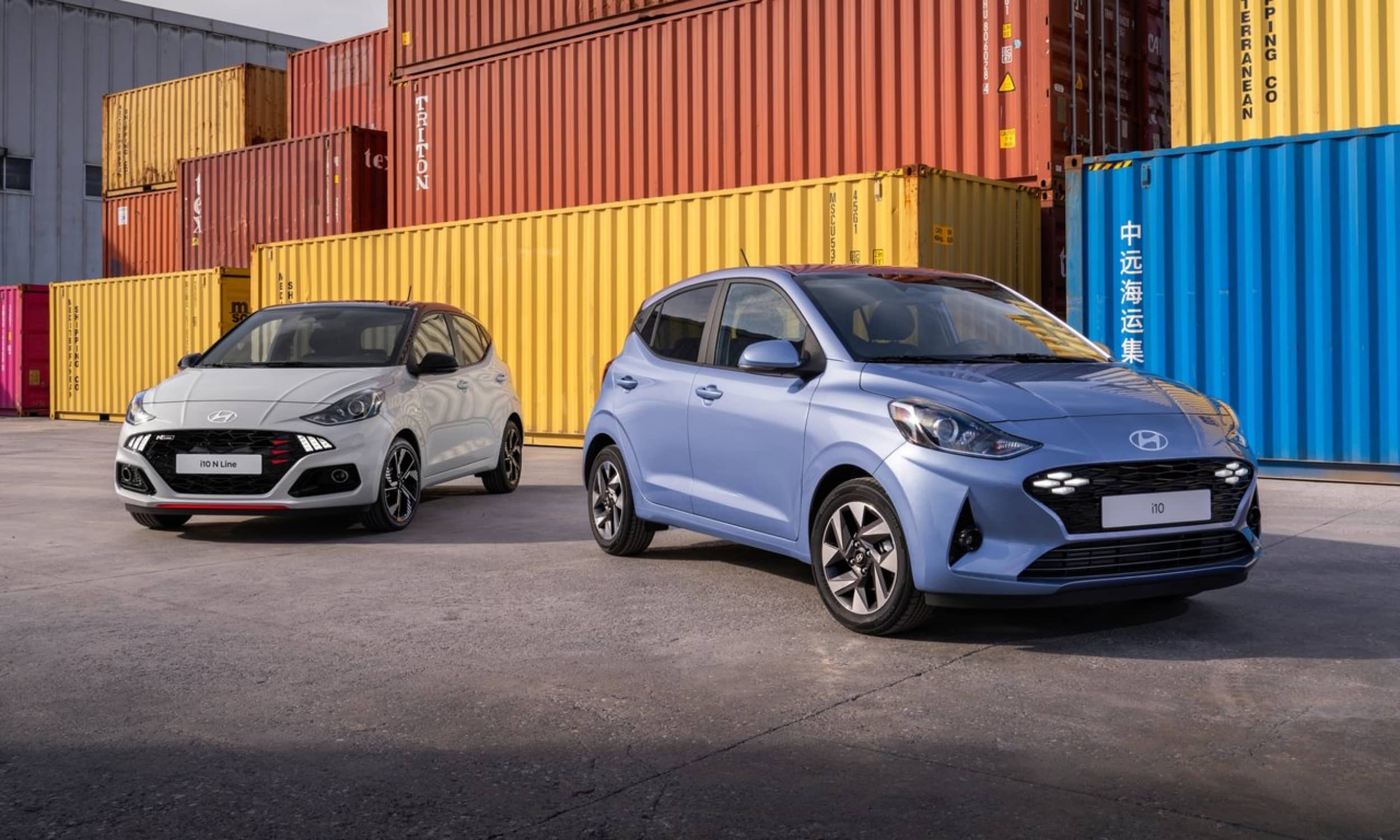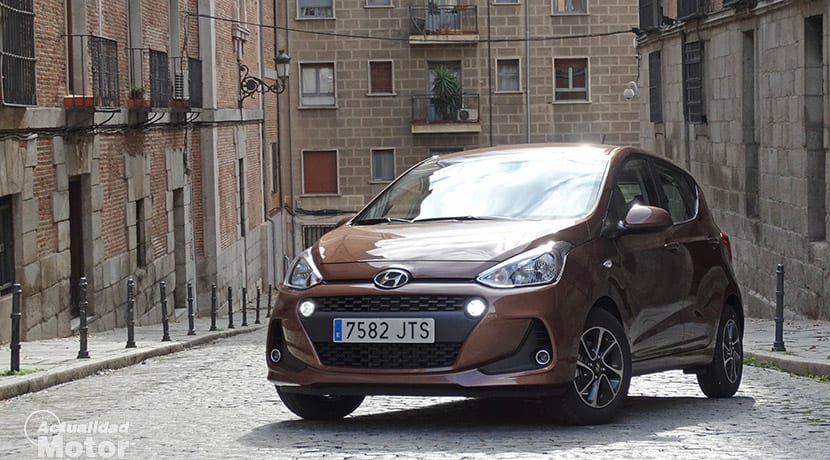
The utility segment continues to be one of the most important for most of the brands that sell in our market today. With a quota close to 5%, customers looking for a segment A car are becoming more demanding, which has led manufacturers to provide a more attractive design and, above all, higher technology and equipment to its products. The Hyundai i10 is the bet of the South Korean firm for this segment A.
The Hyundai i10 appeared for the first time in 2008, being successor to the Hyundai Atos. The second generation of the i10 hit the market in 2013, and now an update has just been launched on the market that briefly modifies its aesthetics and upgrade your equipment, especially in the technology section. Hyundai's goal is for its utility vehicle to exceed the barrier of 3.000 units per year in Spain, with a product very much in keeping with the tastes of the “old continent”.
Brief but rejuvenating exterior changes
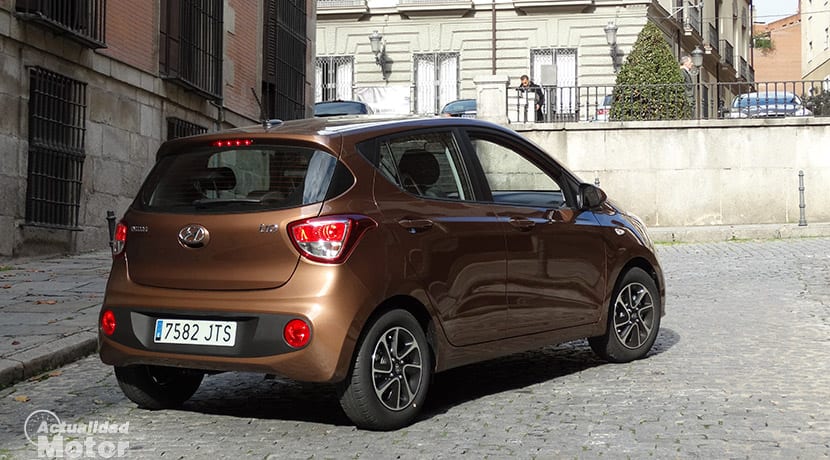
The image of the Hyundai i10 that was marketed until a few weeks ago, that is, the one before this facelift, seems to be that it worked quite well and that, without standing out, it was liked by European consumers. Therefore, Hyundai has preferred to simply make up briefly to make your image a little more youthful and by the way create a slightly more sympathetic aesthetic.
The South Korean urbanite who, by the way, has been developed in Europe for European tastes, shows a fresher front after the incorporation of a new grill called "waterfall shape" that will be a hallmark for the brand's next launches, LED daytime running lights with rounded shapes and the relocation of the side indicators that are now housed in the mirrors.
Meanwhile, the side remains practically unchanged, except for a few new wheels with measurements of 14 and 15 inches. Changing perspective again and looking at the Hyundai i10 from behind, there is a redesigned bumper that includes an area finished in black around the number plate, in the lower part. The later pilots have also been modified, while the fog lights are now rounded, to resemble the front a little more.
Surprising interior for this segment
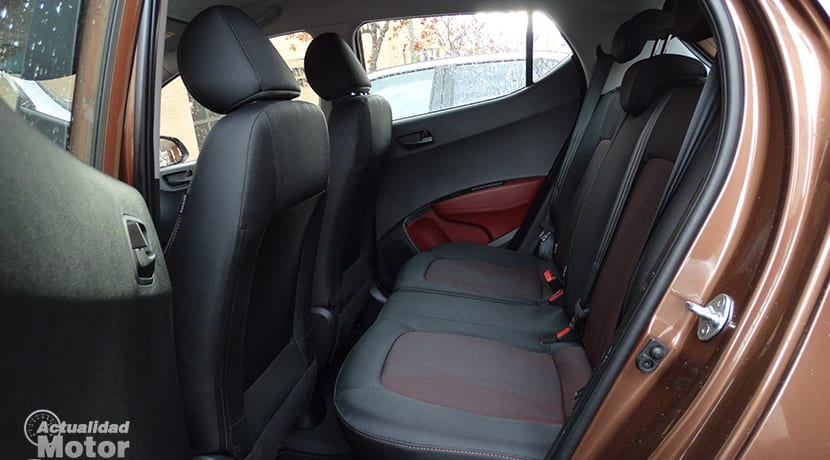
Their outer dimensions They are 3,67 meters long, 1,66 meters wide and 1,5 meters high. For its part, the battle is 2,39 meters. For a car of such external dimensions, we could expect a cabin that is too small, narrow and uncomfortable. Nevertheless, it is surprising how spacious its cabin is, always keeping in mind that it is a segment A.
The two front seats are quite acceptable. Neither the driver nor the passenger will have space problems nor will they be "overwhelmed" and that is, another positive point of the Hyundai i10 is its large glazed area, which allows great visibility in addition to causing a feeling of greater relief. One of the drawbacks is that its steering wheel does offer height adjustment but not depth. Neither is the height of the seat belt adjustable, except in the Style finish, the highest.
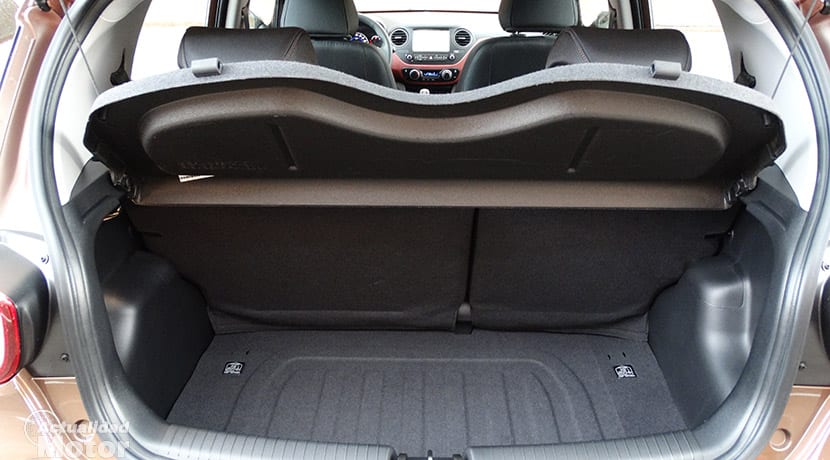
Not all vehicles in this segment, focused on urban life, are approved for five people as is the Hyundai i10. Okay, it will not be very comfortable to move five people inside this car, but the truth is that four will do it with great comfort. The small model of the South Korean firm is a fairly rational product and Hyundai has provided it with some rear squares that they would already like to have other B-segment cars, both in height and in length for the legs.
As to trunk, there are no changes compared to the pre-restyling. cube 252 liters, which will be more than enough for regular purchases in the supermarket and also for a getaway with your partner. Of course, it is a segment A, the luggage of four people for a week of vacation will be quite difficult to locate in the trunk. By folding down the second row of seats, the volume increases to 1.050 litres.
A remarkable technological improvement
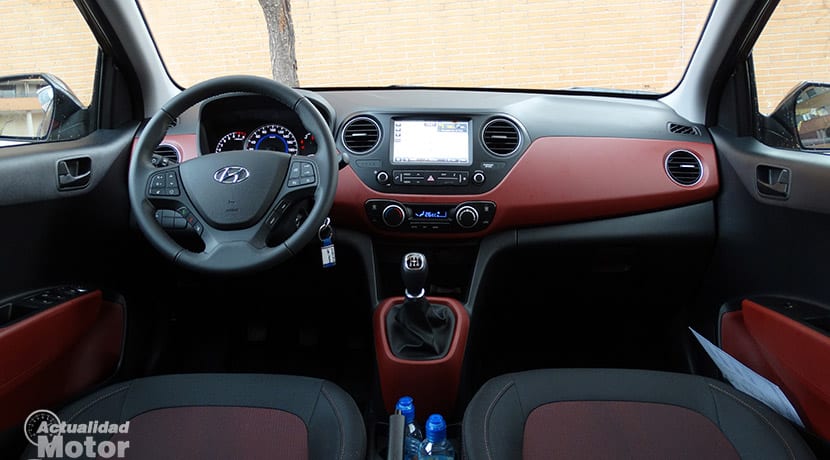
It is in the cabin where we appreciate a clear improvement after this update. The general appearance of the interior has not changed much, but the truth is that the possibility of installing (optionally) a infotainment system with 7-inch screen, navigation, synchronizations with smartphones through Apple CarPlay and Android Auto, as well as traffic or weather alerts in real time via TomTom Services Lives, it can be a detail that convinces many customersespecially the youngest.
On the other hand, it is true that the materials on practically all the surfaces of the passenger compartment are pretty hard plastics. It is a segment A and the manufacturer must save on materials, but honestly they have a correct touch and they all seem to fit perfectly, without noise appearing when we press on one point or another in the central area of the dashboard. In this sense, we have had a very good taste in our mouths. In terms of personalization, the interior can be configured with four different colors; such as orange, beige, blue and red, all of them in combination with black.
This Hyundai i10 2017 also improvement in the security section, although the downside is that depends a lot on the level of finish. 6 airbags, stability control and tire pressure monitoring will be standard on all i10s. To enjoy Hill Start Assist, Front Side Lighting in tight turns, Forward Collision Warning or Lane Departure Alert we must go to the "top of the range".
2 engines and 2 types of transmission
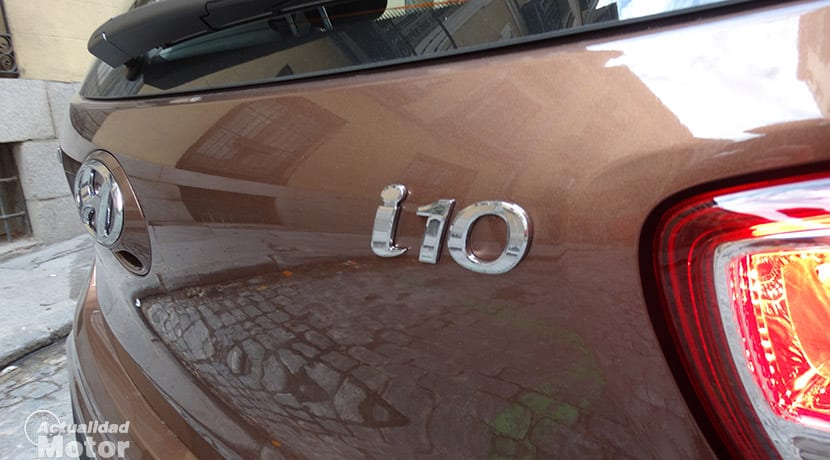
The mechanical range is very brief. The Hyundai i10 maintains the two engines that it offered until now, without adding any more. The least powerful option is three-cylinder 1.0 that delivers 66 hp and 95 Nm; while the one with the greatest power is known 1.2 of 87 hp and 121 Nm of pair.
Personally I do not think more engines are needed, nor a diesel variant. Its performance is not very high, but we must bear in mind that it is a quiet car intended for nuclei urban and that will rarely be used to travel with the trunk loaded to the top.
As standard, the transmission is manual and with five gears, both for the 1.0 and for the 1.2. But for those who prefer a automatic transmission, Hyundai offers a torque converter with four speed simulated, which can only be associated with the variant with the highest power. If we regularly drive through a city congested by traffic, this can be an interesting option, although we cannot talk about its operation because we have not been able to test it.
At the wheel
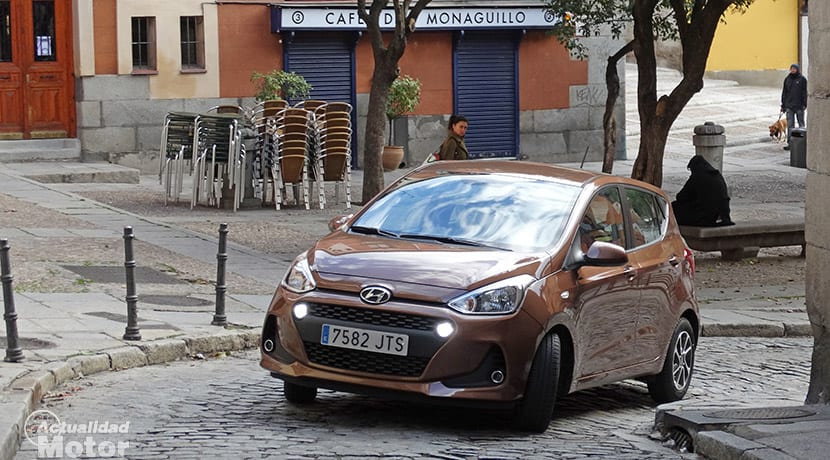
During the presentation to the press we were able to "throw down the gauntlet" to the Hyundai i10 in its version of 87 hp with manual transmission. The route offered by the brand had very urban routes, dividing approximately 50% between the strolling through the central area of Madrid and the circulation along the famous M-30. A very favorable environment to check the aptitudes of this urbanite, although the heavy traffic during the route has not favored us too much.
1.200 cc naturally aspirated and 87 hp. As we mentioned before, it may seem like a mechanic that is too short, scarce. The power is what it is and won't leave you glued to the seat in any moment. Don't expect brilliant recoveries or a sporty touch either. But for focus and regular use this car will be adequate power. We have not tested the 1.0 hp 66, but I think it could be too fair.
The set and the lightness of the car allow good agility in low gears, being able to move smoothly through traffic and being able to start from a standstill in a very lively way without being spectacular. This is what every urban needs in terms of dynamics, so the Hyundai i10, at least with the 1.2 engine, pleasantly complies.
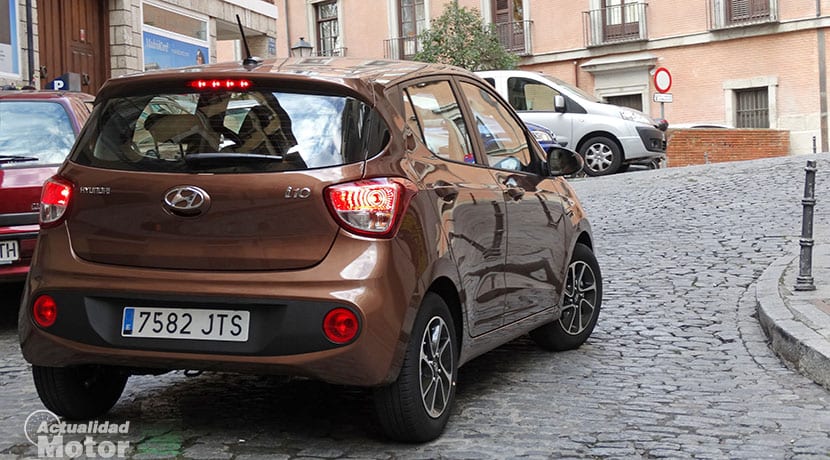
When we leave the urban area and enter the slightly faster roads, the long drivetrain developments They force us to reduce some gear on ascending slopes and also when overtaking to rev the engine, situations in which the propeller noise will be noticed enough in the cabin. The touch of the change does not seek sportsmanship, but its use will not be unpleasant. In addition, the smoothness of its soft clutch, like that of the brake pedal, will make it very easy to drive and dose.
La steering is very soft, it has little weight. This is a detail that in other cars more focused on expressways or looking for sportsmanship would be highly criticized, but as it is an urban car without sporting pretensions, it is a positive point, since it will allow us to maneuver in parking lots or turn between streets with little effort. thanks, also, to its small turning radius. For its part, the suspension, without becoming "bouncy", has given us the feeling of being a bit stiff passing through some other highlight. We will check it more thoroughly when we enjoy several days of a test unit.
Conclusions
This contact has helped us to verify that the Hyundai i10 is, really, one of the most interesting options for those looking for an urban and rational vehicle. It will not stand out for its aesthetics, nor for its dynamic performance, but it will stand out for its habitability, comfort and agility. Like the rest of the brand's models, it has a 5 years warranty no mileage limit; a point to keep in mind.
Equipment Hyundai i10
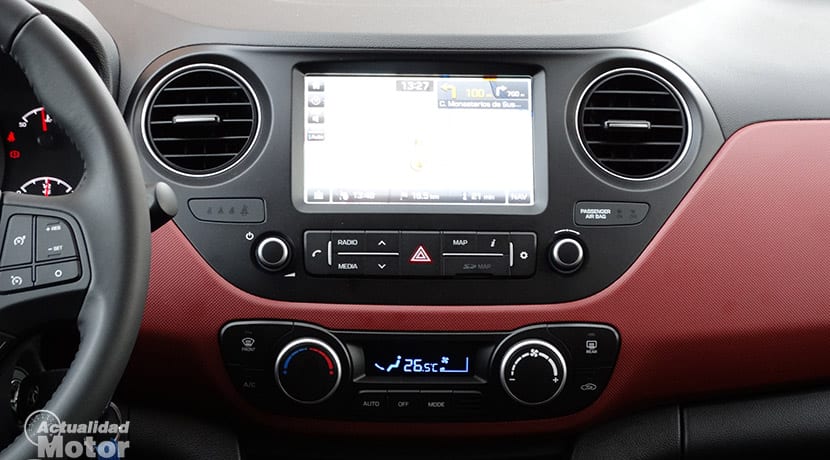
Class
- 14-inch steel wheels
- Spare wheel
- Body color bumpers
- Slightly darkened glasses
- Cigarette lighter socket
- USB and AUX connections
- On-board computer
- Front windows
- Remote central locking with alarm
- 6 airbags
Tecno
- Exterior mirrors in body color
- LED daytime running lights and fog lights
- Leather-wrapped steering wheel and gear knob
- steering wheel controls
- Bluetooth
- Power windows on all 4 doors
- Speed governor and limiter
Techno Plus Pack
- Alloy wheel in 14 inches
- Integrated 7-inch touchscreen navigator with TomTom Services Lives
- Apple CarPlay and Android Auto
- Automatic climate control
Style
- Alloy wheel in 15 inches
- opening sunroof
- Chrome inner handles
- 4 Speakers
- Hands-free opening and starting
- Height adjustable front belts
- rear parking sensor
- Forward collision warning
- Lane Departure Warning
Pricing
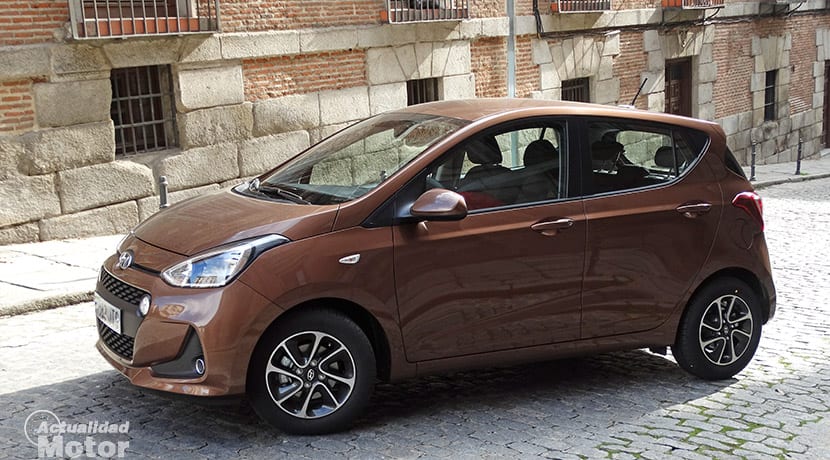
The Hyundai i10 2017 has a launch discount worth 1.900 euros. In addition, financing the discount increases by 1.000 euros more. Finally, by delivering a Hyundai car to the dealer we will benefit from another 600 euros more. In this way we could reach save 3.500 euros of the RRP of the car. The following prices are without applying any discount and with VAT and transport included.
| Motor | Change | Finish | Price |
|---|---|---|---|
| Motor | Change | Finish | Price |
| 66 CV | manual 5v | Class | 12.315 € |
| 66 CV | manual 5v | Tecno | 13.115 € |
| 66 CV | manual 5v | Techno Plus | 13.865 € |
| 1.2 87 hp | manual 5v | Tecno | 13.615 € |
| 1.2 87 hp | manual 5v | Techno Plus | 14.365 € |
| 1.2 87 hp | automatic 4v | Tecno | 14.865 € |
| 1.2 87 hp | automatic 4v | Techno Plus | 15.615 € |
| 1.2 87 hp | manual 5v | Style | 16.170 € |
| 1.2 87 hp | automatic 4v | Style | 17.420 € |








